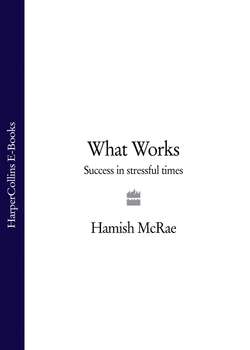Читать книгу What Works: Success in Stressful Times - Hamish McRae - Страница 21
3. WHAT COULD GO WRONG?
ОглавлениеWell, in one sense nothing can go wrong-or rather, wrong specifically as a result of the urban policies followed by the Copenhagen authorities. Thanks to the incremental approach they have adopted, if something does not work then it can be reversed without serious damage.
There are certainly things that might go wrong with the Danish economy and with Copenhagen’s contribution to it: the city might become overpriced; the competitiveness of Denmark vis-à-vis other European countries might slide backwards. But those are general issues. The specific problem that might result from Copenhagen’s policies is that too much economic development is pushed to the periphery of the city, so the main business activities are located outside the centre, while the core becomes little more than a museum.
But the landscape seems to be changing for urban planning in the post-industrial developed world. The model of a downtown central business district, where all the offices are located, surrounded by a suburban sprawl where people live, already looks outdated. We are still at the very early stages of the communications revolution but we can glimpse some of the implications, the decline of the regular commute and the rise of teleworking from home being one of the most apparent.
The more substantial charge is that what works in Copenhagen is specific to that city. For example, it is easier to re-establish the old medieval core as a place where people walk if you have a medieval core to start with. It could also be said that it is simple to encourage people to cycle more if the highest point of the city is just a few metres above sea level-or that the egalitarian Scandinavian society is conducive to the street lifestyle established by the city. Or more generally, it could be pointed out that Copenhagen is a dinky little city by world standards in a very rich country, and the real urban issues are those faced by the mega-cities such as São Paulo, Shanghai, Mumbai or Lagos.
Those are reasonable arguments. But the conclusion flowing from them is not that Copenhagen has little to teach other cities. Rather it is that attention to urban detail can make any place function better for its citizens-with the important qualification that each device used to that end has to be specific to the city in question. You need heated benches in Copenhagen if you want more people to sit down in winter; you do not need them in Mumbai.
But sometimes the transfer of principles really does work. Take Melbourne,13 where Gehl Architects was involved as a consultant in importing the concept of mixed-use development to a city that had come to be described as a ‘doughnut’-a sprawling suburban ring to which everyone would return at the end of the working day, leaving an empty, hollowed-out downtown centre in the evening. To begin with, Swanston Street, the main thoroughfare, was partially closed to traffic and then a whole range of improvements cascaded down to turn Melbourne into something like a twenty-four-hour city: a huge increase in residential housing; an expanded pedestrian network; wider pavements; and an explosion in shops (sometimes punched at street level into the city’s office towers). As a result, according to the online magazine Worldchanging.com, the downtown residential population mushroomed by 830 per cent, pedestrian footfall rose by 98 per cent in the evenings and 250 new outdoor cafés opened. ‘You cannot just pick up one model and transport it to another city,’ said Roy Adams, director of Melbourne’s urban design department. But you can, he added, ‘pick up the principle that we’re going to make the city more liveable’.
Lars Gemzoe in an interview14 again:
Jan [Gehl] and I wrote a book called New City Spaces, which looks at nine cities with visionary public-space policies. For example, Barcelona tried ‘urban acupuncture’, where you put a good spot here and there and the whole body becomes better, but it actually did not do much for traffic in the city. You have Lyons with its ‘human face’, Strasbourg with its streetcar tramlines and so on. The office has been working with Melbourne. In 1994, Jan did a survey of public space in Melbourne and discovered that the city was like a doughnut-the centre was empty of activity. He made recommendations, and in 2004 we made a new study on how they have improved, and they have performed fantastically. They had a 200 to 300 per cent increase in the number of people using downtown public spaces to hang out. Melbourne is a fantastic example because they have seen a huge change, but in a much, much shorter time than Copenhagen.
That is a tremendously powerful point. Melbourne is based on a grid, rather like so many North American cities that have suffered from the doughnut effect. If the principle works there, as it has done, any city in the world can make itself a better place in which to live. That is Copenhagen’s core message to the world.
